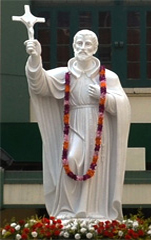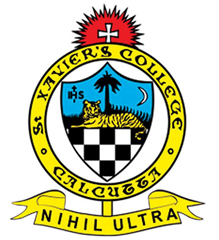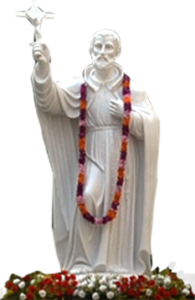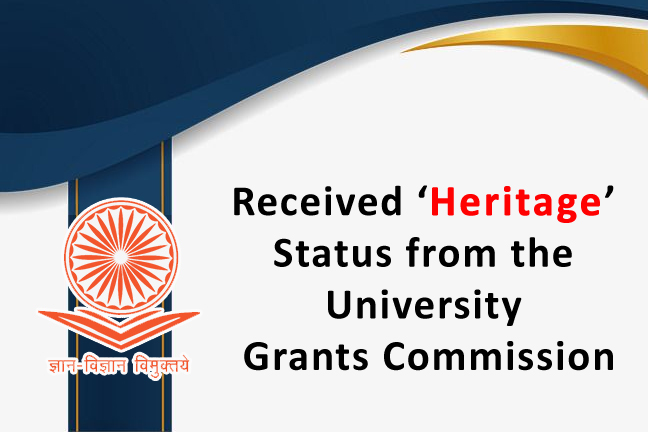Jesuit contribution to Bengal
Fr. John Felix Raj. S.J.
Jesuits at the the Mughal Court
Jalaluddin M was a religious man, who in the words of his son “never for a moment forgot God”. Akbar got his first insight into the Christian character and religion from the actions of two Jesuits – Frs. Antony Vaz and Peter Dias, who had reached Bengal in 1576 at the request of the Bishop of Cochin. These Jesuits had severely rebuked some Portuguese merchants who had defrauded the Mughal treasury by not paying taxes. They had asked them to restitute, otherwise there would be no forgiveness for them. Akbar was greatly impressed by this news and curious about the religion, which insisted so much on honest dealings. Soon he sent for Fr. Gil Eanes Pereira, Vicar-General of Bengal, who in turn suggested that he should invite the Jesuits to his court. In September 1579, Akbar’s ambassador arrived at Goa, asking for two learned priests to be sent to Akbar’s court.
The three Jesuits chosen for the project were Fr. Rudolf Acquaviva who led the mission, Fr. Antony Monserrate and Br. Francis Henriques as his companions. They reached Fatehpur Sikri via Surat and Gwalior on February 28, 1580 and were received with extraordinary warmth and affection by the emperor, whose attachment continued throughout the three years of the duration of the mission. Since Akbar did not become a Christian and appeared to be doubtful as to all forms of faith, unwilling to commit himself, the Jesuits thought they might as well spend their time elsewhere. In 1582, Francis Henriques and Monserrate returned back leaving behind Rudolf who wanted to pursue the efforts for some more time. But in 1583, Rudolf too returned to Goa as nothing positive happened, thus ending the first Jesuit Mission to the great Mughal Empire.
The first Jesuit Mission cannot be considered as a total failure. Their presence did help to bring about a better understanding between Islam and Christianity. In 1591, a second mission consisting of Fr. Edward Leitao, Fr. Christopher de Vega and Bro. Stephen Riberio arrived at Lahore on Akbar’s invitation. But it lasted less than a year. The Jesuits soon felt that they were engaged in a futile task and feared that Akbar was manipulating them for his own ends.
Once again after a gap of 13 years, Akbar’s earnest efforts to obtain a replacement were rewarded. In May 1595, Fr. Jerome Xavier (grand nephew of Francis Xavier) accompanied by Fr. Manuel Pinheiro and Bro. Bento de Goes arrived in Lahore on a third mission. This time Akbar gave them permission to open a school. However, the king avoided the subject of religion with the Fathers on the pretext that the Jesuits needed to learn Persian before embarking on religious discussions.
Jesuit Contributions to Bengal
It is said that Akbar brought the Jesuits to Northern India. As mentioned earlier, it was the conduct of the first two Jesuits in Bengal in 1576 that drew the attention of emperor Akbar to the Christian Faith. When the two left, Fr. Gil Eanes Pereira of the Diocese of Cochin followed their mission in Bengal. Jesuit priests returned to Bengal in 1598-1599, with the intention of working there on a more permanent basis. They started a school and a hospital at Hooghly for some months. From Hooghly they went to Chandecan, the capital of Raja Pratapaditya of Jessore, where they were received most cordially by that Prince and the Portuguese as well. The Raja granted them full permission to preach to his subjects and to baptize all those who wished to become Christians. It was at Chandecan (Jessore) that the first Jesuit church in Bengal was opened in January 1600. From Chandecan they proceeded to Sripur where Raja Kedar Rai was friendly. They also went to the great port of Chittagong and Dianga.
From 1602 to 1615 the relations between the Portuguese and the king of Arakan (in whose territory these two places belonged) were generally hostile. The Jesuit Fathers were therefore imprisoned and the Christians were ill-treated. Kedar Rai of Sripur and the Raja of Chandecan also did the same. Under these circumstances the surviving Jesuits left Bengal, some going to Pegu (Burma) and the others returning to Cochin.
After a short interval, by 1616, there were once again six Jesuits in various parts of Bengal. One was stationed at Sripur, where nearly a thousand Christian refugees from Sandwip had settled down after the expulsion of Fr. Sebastian Gonzales from Dakha. Another Jesuit was in Dhaka. The other four were stationed at Hooghly and Pipli. In several of these places the Jesuits erected churches of their own. But when they tried to expand their activities in Hooghly, the Augustinians resisted them and imposed certain restrictions on their work. It was at about this time that the Jesuit residence of Hooghly became a modest “College” where children were taught to read and write, and speak Latin.
In 1625 there was a terrible famine followed by pestilence. Four of the Jesuits belonging to Hooghly College and two Augustinian fathers died in the service of the plague-stricken. As the century advanced the Jesuits were often not able to replace their losses, while the Augustinians generally maintained a sufficient number of priests in Bengal. Jesuit work suffered a serious setback with the seizure of the Portuguese settlement by the Mughals in 1632, but they continued in Bengal, which was an Augustinian mission field since 1599.
Under the patronage of the Portuguese Padroado, the Augustinians, the Jesuits and the Dominicans had been catering to the spiritual needs of the Portuguese and in the process had also baptized hundreds of natives, including the vast numbers of prisoners and slaves captured by them in the course of frequent wars with the local chieftains. Some of the missionaries, through their spirit of service during the frequent outbreak of plagues, attracted a number of people to the Christian fold.
In 1691, a small group of French Jesuits had come to Chandernagore from Pondicherry. In 1694, two more French Jesuits, Father Duchatz and Debeszes had come to Chandernagore after the failure of a scientific expedition to Siam, now Thailand. They began ministering to the Catholics of the town. By the beginning of the 18th century, the Catholics of Chandernagore were served by the Jesuits working in two churches and a school. Fr. Charles de la Breuille seems to have been the first parish priest (1693-1698) of the church of St. Louis. We hear little about the life and work of the early Chandernagar Jesuits.
Jesuit Bishop Francis Laynes of Mylapore, which he ruled from 1710, visited Balasore in June 1712 and was well received by the English Governor. He then paid a brief visit to Calcutta and moved on to Bandel, the Christian centre (close to Chandernagar) where there were Europeans, Eurasians, and Indian converts, mostly from the lowest castes. The Bishop began thereafter the formal visitation of the territory which is today Bangladesh, spending no less than nine months at Chittagong, before proceeding to Dhaka. Everywhere there were baptisms, confirmations, marriages, and other church ceremonies, which had not been seen in Bengal for long. Apart from a considerable number of ‘public’ or open Christians, there were in this region also many hidden or secret Christians – hidden because of the Mughal ban on conversions – who also came to the sacraments quietly.
After his exhausting travels, Bishop Francis Laynes retired quietly to the Jesuit house at Hooghly, doing what work he could, and trying to recoup – but he was in poor health, as the long years of missionary life had taken their toil. Shortly after Easter 1715, he was seized by a fever and the zealous sannyasi-Bishop died in June when not yet sixty. His visitation and presence seemed to have given new life to the Bengal mission, but with his death things again came to a standstill. The Jesuits had a house, a school and a Church at Bandel. In 1706, there were only two Jesuits left, Francis Ozech, the Rector and another priest. The station ceased functioning in 1740, with the death of the last priest, Fr. Deistermann. When Fr. Tieffenthaler visited Bandel in 1765, the house and the school were but relics of the past and the Church was in a dilapidated condition.
The nineteenth century was a period of growth for the Society of Jesus under the able leadership of Fr. Roothan, the Jesuit General who collaborated on a world level with Gregory XVI and the ‘Congregation for the Propagation of Faith, for the restoration of the missions. As the plea from Calcutta had been for English speaking born priests, the new Vicariate of Bengal was entrusted to the Jesuit province of England, with Fr. Robert Saint Leger from Ireland as the leader of the new mission. The Jesuit General wanted to make of Calcutta for British India what Goa had been for Portuguese India. The immediate scope of the SCPF in sending the Jesuit Missionary expedition under Fr. Leger to the newly established Vicariate of Calcutta was to put an end to the existing scandalous factions and to serve more adequately the numerous Catholics who appealed to the SCPF.
The English Jesuits came to Bengal in 1834. A group of eight with one diocesan priest landed at Babughat in October 1834. In July 1835 they started St. Francis Xavier’s College at Moorghyhatta, Calcutta, the first Jesuit College in the East after the restoration of the Jesuit Order in 1814. In 1841 they shifted the college to 22 Chowringhee, the present site of the Indian Museum. In October 1846, the Jesuits handed over the college to the local Bishop Most Rev. Dr. Carew and left Calcutta. The college was subsequently closed.
In the beginning of the second half of 19th century, the Bengal Mission had been entrusted to the Belgian Province of the Society of Jesus. Since the people of Calcutta had insisted on having priests well versed in English, the final expedition was composed of four Belgian Jesuits with Fr. Depelchin as the Superior and three English Jesuits. The Missionaries reached Calcutta on Monday 18 November 1859.
When the Jesuits were entrusted by Propaganda with the missions of Bengal, they were made responsible for the existing Calcutta parishes. Four of them had a history behind them: The Cathedral Church of Our Lady of the Holy Rosary built in 1799. The Sacred Heart Church Dharamtala and Our Lady of Happy Voyage at Howrah in 1834 and St. Thomas’ Middleton Row in 1842. The Jesuits in the course of time added four new parishes: St. Francis Xavier, Bowbazar (1897), St. Teresa’s, Taltola (1898), St. John’s, Sealdah (1907) and St. Ignatius’ Kidderpore (1911).
Jesuits are known as pioneers. Their pastoral care and concern of the faithful and pioneering works in various fields in 24 Parganas are highly appreciated. The Sacred Heart Church, Dharamtala was transferred from the Portuguese Padroado to Mgr. Carew in August 1841. Fr. Goiran who came to Calcutta with the first English Jesuits in 1834 became the first Parish priest and continued till Fr. Verali succeeded him in 1844.
Some protestant Christians from 24 Parganas came to the Sacred Heart Church, the then centre of the Bengali Christian community, expressing their desire to become catholics. With the encouragement of Mgr Carew and the help of Mr. Maikel Crow, the then District Collector of 24 Parganas, Fr. Verali visited Kaikhali several times. A small chapel was built in 1845 and Fr. Zubiburu, a Carmelite, went to reside there. Besides Kaikhali, Fr. Zubiburu founded a small community at Krishnagar in 1845 and another at Midnapore in 1846.
In 1865 Jesuit Fr. Goffinet settled at Kaikhali. He often visited the small Christian community of Debipur and opened a school in August 1869. In 1870 the school had 144 pupils. Fr. Delplace is acclaimed the “founder of the 24 parganas Mission”. He started Basanti mission in October 1873, Khari in 1874, Baidyapur in 1875, Raghapur in 1876 and Morapai in 1877. “He would stay in one village for two or three months, instructing the people, then moving on to the next village that invited him”.
The school of St. Xavier’s, Calcutta was reopened on 16th January 1860 at 10 Park Street with 75 students on the roll. The school building was originally a public theatre called the Sans-Souci Theatre. The company that started it having failed, His Grace Dr. Carew had bought it. By 30th January, there were 86 pupils. The college annual functions were honoured by the presence of the successive Lt. Governors of Bengal and three times with that of Viceroys: Sir John Laurence in 1868; Lord Mayo in 1870 and Lord Lytton in 1877. The College was affiliated to the Calcutta University in 1862. Besides the school, the Jesuits were entrusted with the Parish of St. Thomas as well as the Fort William chapel of the military. Today, in 2011, the School department has around 2,300 and the College 6,500 students on their rolls respectively.
In Bengal there are two Jesuit provinces: Kolkata and Darjeeling with 350 Jesuits spread all over the State. Dumka-Raiganj province partially extends into Raiganj area of Bengal. Jesuits are involved in educational work, pastoral ministry, tribal and dalit welfare programmes, social research and action, social communication and medical and health care. They are chiefly known for their educational institutions, big or small. They are responsible, to a great extent, for the educational and socio-economic advancement of tribals in the Chottanagpur and Santal Pargana areas.
In the educational field, there are two Jesuit University Colleges, namely St. Xavier’s College, Kolkata and St. Joseph’s College, Darjeeling; ten High Schools (St. Xavier’s, Kolkata, Durgapur, Burdwan, Haldia, Raiganj; St. Lawrence School, Kolkata, St. Paul’s School, Raghapur, St. Joseph’s, Darjeeling, etc); one media research centre affiliated to UGC (EMRC), one communication centre (Chitrabani) and numerous primary schools and hostels in villages. There are around 25,000 students studying in Jesuit educational institutions in Bengal.
Fr. Lafont, professor of Physics at St. Xavier’s College, played a leading role in popularising science. Sir J. C. Bose and Dr. C. V. Raman found encouragement for their introduction to science in the person of Fr. Lafont. He was called the “Father of Science in India.” Modern Indology owes much to the Belgian Jesuits like Johanns, Dandoy, Bayart, Antoine, De Smet and Fallon of St. Xavier’s College, Calcutta. They had become enamoured of the rich religious and cultural heritage of India and Bengal.
They contributed a lot to the development of Bengali culture and enriched the Bengali and Sanskrit languages. They made profound contributions to the dialogue between Hinduism and Christianity and added a whole new dimension to apostolic work. ” Light of the East” series, published by Fr. Dandoy from 1922 to 1946 to encourage inter-religious and inter-cultural dialogue is worth mentioning here. Their only ambition was to serve to the best of their abilities the two causes that they cherished most in their hearts: the cause of Christ and the cause of India. Fr. Fallon was called the “apostle of inter-religious dialogue” in Calcutta.








